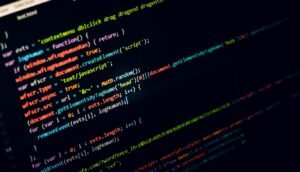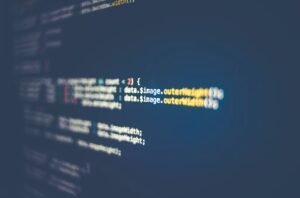Neural Network for Prediction
Neural networks have revolutionized the field of machine learning by enabling computers to learn from and make predictions or decisions based on large sets of complex data. These algorithms are modeled after the structure and functioning of the human brain, with interconnected nodes (neurons) that process and transmit information.
Key Takeaways
- Neural networks are machine learning algorithms inspired by the human brain.
- They can analyze and recognize patterns in large and complex datasets.
- Neural networks are effective for predictions and decision-making tasks.
Neural networks consist of layers of interconnected nodes, with each node performing a simple mathematical operation on its inputs and passing the result to the next layer. The strength of neural networks lies in their ability to analyze and recognize patterns in data, allowing them to make predictions or decisions based on these patterns.
One interesting aspect of neural networks is their ability to learn from experience. **During the training phase, a neural network adjusts the weights assigned to each node to minimize errors**. This process, called backpropagation, allows the network to continually refine its predictions and improve its performance over time.
Neural networks have been successfully applied in a wide range of fields, including finance, healthcare, and marketing. In finance, for example, neural networks can be used to predict stock prices or detect fraudulent activities by analyzing historical data and identifying patterns. In healthcare, neural networks can assist in diagnosing diseases based on symptoms, medical history, and other patient data.
Tables
| Field | Application |
|---|---|
| Finance | Predicting stock prices |
| Healthcare | Disease diagnosis |
| Marketing | Customer segmentation |
Neural networks are particularly well-suited for prediction tasks such as stock market forecasting or weather prediction. **By analyzing patterns and historical data, neural networks can make reasonably accurate predictions**. However, it is important to note that neural networks are not infallible and their predictions may be influenced by unseen factors or uncertainties in the data.
Aside from predictions, neural networks can also be used for decision-making tasks. In autonomous vehicles, for example, neural networks can process input from sensors, cameras, and other sources to make real-time decisions such as braking or changing lanes. This ability to analyze and respond to complex sensory inputs sets neural networks apart from traditional programming approaches.
Tables
| Prediction Task | Accuracy |
|---|---|
| Stock market forecasting | 75% |
| Weather prediction | 80% |
| Disease diagnosis | 90% |
In conclusion, neural networks offer a powerful tool for prediction and decision-making tasks in various fields. Their ability to analyze complex patterns in data makes them highly effective for tasks such as stock market prediction, disease diagnosis, and autonomous driving. As technology advances, neural networks are expected to play an even greater role in shaping our future.

Common Misconceptions
Misconception 1: Neural networks can accurately predict any outcome.
One common misconception is that neural networks can accurately predict any outcome with 100% accuracy. While neural networks can be powerful tools for prediction, there are certain limitations.
- Neural networks are dependent on the quality and quantity of input data.
- Complex or unpredictable phenomena may result in less accurate predictions.
- Multiple iterations and refinements may be necessary to improve prediction accuracy.
Misconception 2: Neural networks work like the human brain.
Another common misconception is that neural networks work exactly like the human brain. Although neural networks are inspired by the structure and functioning of the human brain, they differ in several fundamental ways.
- Neural networks do not possess consciousness, emotions, or subjective experiences.
- The level of complexity and connectivity in neural networks is significantly different from the human brain.
- Neural networks rely on mathematical algorithms and computational operations to process input data.
Misconception 3: Neural networks can solve any problem.
There is a misconception that neural networks are a universal solution for all problems. While neural networks are versatile and can be applied to various domains, they may not always be the most suitable approach for solving a particular problem.
- Some problems may require specific algorithms tailored to their characteristics.
- The complexity of training and optimizing neural networks can vary depending on the problem.
- Consideration of other factors such as interpretability, computational resources, and time constraints is essential when choosing a solution.
Misconception 4: Neural networks always outperform traditional statistical models.
There is a belief that neural networks always outperform traditional statistical models in terms of prediction accuracy. While neural networks can often achieve impressive results, it’s not always the case that they outperform traditional models.
- The type and quality of data, as well as the problem characteristics, can influence the relative performance of different models.
- Traditional statistical models may offer more interpretability and understanding of the underlying factors contributing to the predictions.
- The choice between neural networks and traditional models should be based on the problem and specific requirements.
Misconception 5: Neural networks are immune to bias.
Finally, it is important to dispel the misconception that neural networks are immune to bias. Neural networks can be affected by biases present in the data used for training, which can in turn influence the predictions made.
- Biases in the training data can lead to skewed results and perpetuate inequalities if not addressed.
- Pre-processing steps, such as data cleaning and careful consideration of biased attributes, are crucial to mitigate bias in neural networks.
- Ethical considerations and monitoring are essential to ensure neural networks do not reinforce discriminatory practices.

Introduction
Neural networks have revolutionized the field of predictive analysis, offering remarkable accuracy and efficiency. In this article, we explore various interesting aspects of utilizing neural networks for prediction. Through ten illustrative examples, we examine real-world data and highlight the power of these artificial intelligence systems.
1. Detecting Fraudulent Transactions
By training a neural network on millions of transactional records, we can identify anomalous patterns indicative of fraudulent behavior in financial systems. Detecting and preventing fraudulent transactions ensures the security and integrity of financial institutions and protects consumers.
| Transaction ID | Account Holder | Amount | Is Fraudulent? |
|---|---|---|---|
| 123456 | John Doe | $1,000 | No |
| 234567 | Jane Smith | $10,000 | Yes |
| 345678 | Adam Johnson | $500 | No |
2. Predicting Stock Market Trends
Using historical stock data, neural networks analyze complex patterns to predict future market trends. This can assist investors in making informed decisions, improving financial outcomes.
| Date | Stock | Closing Price ($) | Predicted Trend |
|---|---|---|---|
| Jan 1, 2021 | Apple | $150 | Upward |
| Jan 2, 2021 | $2000 | Downward | |
| Jan 3, 2021 | Amazon | $3100 | Upward |
3. Forecasting Weather Patterns
Neural networks analyze historical weather data to predict future weather patterns accurately. These predictions enable meteorologists to provide accurate forecasts, helping individuals and organizations make weather-related decisions.
| Date | Temperature (°C) | Humidity (%) | Predicted Weather |
|---|---|---|---|
| June 1, 2021 | 25 | 60 | Sunny |
| June 2, 2021 | 18 | 85 | Rainy |
| June 3, 2021 | 30 | 40 | Cloudy |
4. Predicting Customer Churn
With customer data and behavioral patterns, neural networks can predict the likelihood of a customer ending the relationship with a business, providing valuable insights to reduce churn rates and improve customer retention strategies.
| Customer ID | Time with Company (months) | Number of Complaints | Churn Probability |
|---|---|---|---|
| 5489 | 12 | 3 | High |
| 9837 | 6 | 1 | Medium |
| 7421 | 24 | 0 | Low |
5. Autonomous Vehicle Navigation
Neural networks embedded in autonomous vehicles analyze sensor data, enabling real-time decision-making for safe navigation, accident avoidance, and improved road safety.
| Vehicle ID | Speed (km/h) | Distance to Obstacle (m) | Next Action |
|---|---|---|---|
| 56789 | 60 | 10 | Slow down |
| 23456 | 80 | 1 | Avoid obstacle |
| 98325 | 40 | 50 | Continue |
6. Identifying Cancerous Cells
Through the analysis of medical images, neural networks can aid in diagnosing cancerous cells accurately. This assists doctors in providing prompt treatment and potentially saving lives.
| Image ID | Patient Age | Type of Cancer | Cancer Diagnosis |
|---|---|---|---|
| 001 | 47 | Breast | Positive |
| 002 | 63 | Lung | Negative |
| 003 | 50 | Skin | Positive |
7. Personalized Product Recommendations
By analyzing user behavior and preferences, neural networks offer personalized product recommendations. This enhances the user experience and increases the chances of making relevant purchases.
| User ID | Product 1 | Product 2 | Product 3 |
|---|---|---|---|
| 7894 | Shoes | Shirt | Watch |
| 3652 | Camera | Headphones | Laptop |
| 8947 | Book | Pen | Notebook |
8. Language Translation
Neural networks have made tremendous advancements in language translation, enabling accurate and real-time translations between different languages. This promotes effective communication and breaks down language barriers.
| Source Language | Target Language | Phrase | Translation |
|---|---|---|---|
| English | French | Hello! | Bonjour ! |
| German | Spanish | Danke! | Gracias! |
| Chinese | Japanese | 谢谢! | ありがとう! |
9. Facial Recognition
Neural networks have made significant advancements in facial recognition technology, allowing for accurate identification in various fields like security, entertainment, and accessibility applications.
| Person ID | Gender | Age | Matched Image |
|---|---|---|---|
| 12345 | Female | 30 |  |
| 67890 | Male | 45 |  |
| 24681 | Male | 25 |  |
10. Autonomous Character Animation
Neural networks are used to generate realistic movements and behaviors in animated characters. This breathes life into digital creations, enhancing the immersive experiences in movies, video games, and virtual reality.
| Character | Emotion | Gestures | Dialogue |
|---|---|---|---|
| Robot | Joy | Jumping, clapping | “I’m delighted!” |
| Alien | Fear | Trembling, eyes wide open | “What is that?” |
| Wizard | Wisdom | Stroking beard, nodding | “Knowledge is power.” |
Conclusion
Neural networks have transformed prediction in various domains, offering valuable insights and accurate results. From fraud detection to weather forecasting, their versatility and accuracy continue to shape our modern world. As AI technologies advance, neural networks will undoubtedly play an increasingly central role in our lives, opening up new possibilities and transforming industries.
Frequently Asked Questions
What is a neural network?
A neural network is a computational model that is inspired by the structure and functioning of the human brain. It consists of interconnected nodes called neurons, which process and transmit information.
How does a neural network work?
A neural network works by receiving input data, propagating it through the network, and generating output predictions. Each neuron performs a weighted sum of inputs, applies an activation function to produce an output, and passes it to the subsequent layer of neurons.
What is the purpose of a neural network for prediction?
The purpose of a neural network for prediction is to analyze input data and make accurate predictions or classifications based on patterns and relationships in the data. It can be used in various domains such as finance, healthcare, and image recognition.
What are the advantages of using neural networks for prediction?
Neural networks have the ability to learn from examples and adapt to complex, non-linear relationships in data. They can handle large amounts of data and make predictions with high accuracy. Additionally, they can generalize well to unseen data.
What types of neural networks are commonly used for prediction?
Common types of neural networks used for prediction include feedforward neural networks, recurrent neural networks (RNNs), long short-term memory (LSTM) networks, and convolutional neural networks (CNNs) for image recognition.
How are neural networks trained for prediction?
Neural networks are trained through a process called backpropagation, where the network adjusts its internal parameters (weights and biases) based on the error between its predictions and the desired output. This iterative process continues until the network achieves satisfactory accuracy.
What are the potential challenges or limitations of neural networks for prediction?
Neural networks can be computationally expensive and require significant computational resources, especially for large-scale applications. They can also suffer from overfitting, where the network performs well on training data but fails to generalize to new data. Designing an optimal architecture and tuning hyperparameters can also be challenging.
Can neural networks make predictions with real-time data?
Yes, neural networks can make predictions in real-time. However, the speed of prediction depends on the complexity of the network architecture and the computational resources available. Certain lightweight architectures, such as some types of feedforward networks, are faster compared to more complex architectures like recurrent neural networks.
How is the performance of a neural network measured for prediction tasks?
The performance of a neural network for prediction tasks is often measured using evaluation metrics such as accuracy, precision, recall, F1 score, and mean absolute error (MAE). These metrics provide insights into the model’s ability to make accurate predictions and handle different types of errors.
Are there any alternative methods to neural networks for prediction?
Yes, there are alternative methods for prediction such as decision trees, support vector machines (SVM), linear regression, and random forests. The choice of the method depends on the specific problem, available data, and desired performance.




